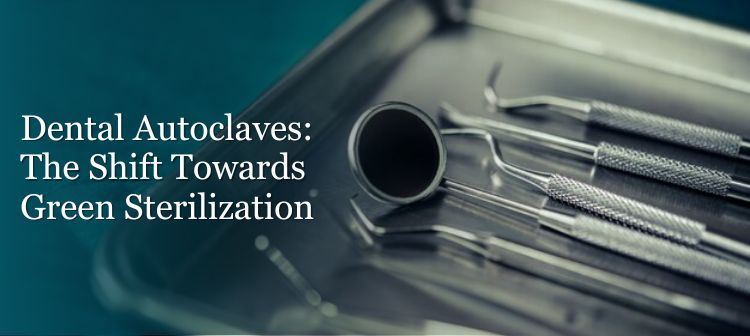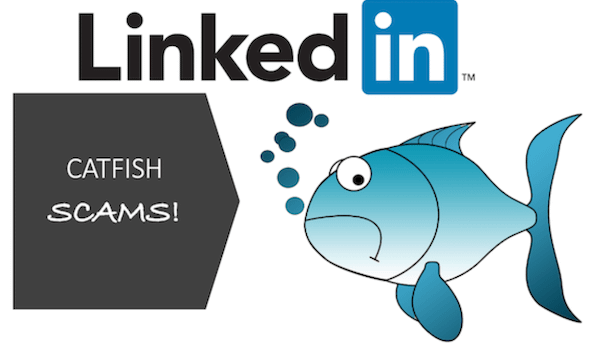Advancements in Dental Autoclaves at Unicorn Denmart

Embracing a Sustainable Future: The Role of Dental Autoclaves in Green Sterilization
In the world of dentistry, the sterilization of instruments is a critical aspect of patient safety and care. At the heart of this essential process lies the dental autoclave, a device that has long been the cornerstone of sterilization in dental clinics. Traditionally, these autoclaves have employed heat and pressure to ensure that dental tools are free from harmful microorganisms, a process fundamental to preventing cross-contamination and infection.
However, as the global community becomes increasingly aware of environmental concerns, the field of dentistry is not immune to the call for sustainable practices. This awareness has sparked a significant shift in the approach to sterilization within dental care, steering towards green sterilization methods. Green sterilization encompasses more than just the elimination of pathogens; it represents a broader commitment to eco-friendly practices and technologies that reduce the environmental footprint of dental operations.
As we delve into this topic, we will explore how modern dental autoclaves are evolving to align with this eco-conscious approach. The transition towards green sterilization in dentistry is not just a trend but a necessary step towards more sustainable dental practices. This shift involves the adoption of energy-efficient, environmentally friendly dental equipment and the integration of practices that prioritize the health of our planet without compromising the quality of patient care.
In this blog, we will discuss the advancements in dental autoclaves that contribute to green sterilization, examining how these innovations are helping dental clinics reduce their carbon footprint while maintaining the highest standards of sterilization. As we journey through the evolution of dental autoclaves, we will highlight the significance of this shift and its implications for the future of environmentally responsible dentistry.
- The Importance of Green Sterilization in Dentistry
Understanding Green Sterilization
Green sterilization in dentistry is an emerging concept that extends the focus of traditional sterilization practices to include environmental responsibility. This approach involves adopting sterilization methods and equipment that are not only effective in eliminating pathogens but also mindful of their environmental impact. The relevance of green sterilization in modern dental practices is becoming increasingly significant in the wake of growing environmental concerns and the global push towards sustainability.
Incorporating green sterilization methods means using autoclaves and sterilization processes that consume less energy, produce fewer emissions, and reduce waste. This eco-friendly approach aligns with the broader objective of many dental practices to adopt more sustainable operations, reflecting a commitment to protecting the environment while ensuring patient safety.
Impact of Traditional Sterilization Methods
Traditional sterilization methods in dentistry, while effective in maintaining hygiene standards, often overlook their environmental impact. Conventional autoclaves, for instance, can consume a significant amount of electricity and water, contributing to a larger carbon footprint. Additionally, the use of certain chemical sterilants and the generation of waste products like disposable protective barriers can have detrimental effects on the environment.
The Role of Melag Vacuclave 123 Autoclave
In response to these challenges, products like the Melag Vacuclave 123 Autoclave are leading the way in green sterilization. This state-of-the-art autoclave is designed to be energy-efficient and environmentally friendly. It features advanced technology that minimizes energy and water consumption, significantly reducing the environmental impact of the sterilization process. The Melag Vacuclave 123 Autoclave exemplifies how dental practices can maintain the highest sterilization standards while also embracing eco-friendly practices.
By incorporating equipment like the Melag Vacuclave 123 Autoclave, dental clinics can take a significant step towards reducing their carbon footprint. Embracing green sterilization is not just about adhering to environmental guidelines; it’s about being a part of a larger movement towards sustainable healthcare practices. As dental professionals recognize the importance of this approach, green sterilization is set to become an integral part of modern dentistry, balancing patient care with ecological consciousness.

Eco-Friendly Dental Practices: A Growing Trend
Embracing Sustainability in Dental Care
The trend towards eco-friendly dental practices is gaining momentum as the global community becomes more conscious of environmental issues. Dentistry, like many other healthcare fields, is witnessing a growing awareness of its environmental impact and is taking strides to adopt more sustainable practices. This shift towards eco-friendliness is not just a response to external pressures but is also driven by the dental community’s commitment to responsible stewardship of the environment.
Eco-friendly dental practices encompass a wide range of initiatives, from reducing waste and conserving water to using biodegradable products and adopting green building standards. One of the key areas where this trend is prominently visible is in the use of sustainable dental equipment. Dental clinics are increasingly turning towards devices and tools that minimize environmental impact without compromising on the quality of patient care.
The Role of Sustainable Dental Equipment
Sustainable dental equipment plays a pivotal role in reducing the environmental footprint of dental practices. Autoclaves, essential for sterilization in dentistry, are a prime focus in this shift. Modern autoclaves are designed to be more energy-efficient and use less water, significantly reducing their ecological impact. Features like optimized cycle times, reduced power consumption, and efficient water usage are becoming standard in newer models.
Innovative autoclaves are also being designed to produce less waste, with some models featuring reusable sterilization containers as opposed to disposable ones. This not only cuts down on waste generation but also on the long-term costs associated with purchasing disposable containers.
Moreover, the integration of smart technology in autoclaves is enhancing their efficiency and sustainability. These smart systems can adjust energy and water usage based on the load, ensuring optimal resource utilization.

Advancements in Dental Autoclaves for Green Sterilization
Innovations in Eco-Friendly Sterilization
The realm of dental sterilization is witnessing significant advancements, particularly in the development of dental autoclaves that align with the principles of green sterilization. These advancements are centered around creating energy-efficient and environmentally responsible devices without compromising on the effectiveness of sterilization processes.
One of the primary innovations in modern dental autoclaves is the enhancement of energy efficiency. Newer models are designed to consume less electricity, significantly reducing their carbon footprint. This is achieved through advanced heating elements that require less power to reach sterilization temperatures and improved insulation that retains heat more effectively.
Another key advancement is in water conservation. Modern dental autoclaves feature sophisticated water reclamation systems that recycle and reuse water used in the sterilization process. This not only minimizes water consumption but also reduces the volume of wastewater generated.
Leading Examples of Green Dental Autoclaves
Several models of dental autoclaves are leading the green shift with their innovative features. For instance, autoclaves with rapid cycle times reduce energy consumption by completing sterilization processes more quickly. Additionally, some models are equipped with eco-friendly features like low-energy standby modes and programmable timers, allowing them to operate more efficiently.
Another noteworthy advancement is in the area of waste reduction. Some advanced autoclaves are designed to work with reusable sterilization pouches or containers, significantly cutting down on the need for single-use plastics and other disposables.

Energy-Efficient Sterilization: Benefits and Challenges
The Advantages of Energy-Efficient Sterilization
Adopting energy-efficient sterilization methods in dental clinics comes with a multitude of benefits, reflecting a responsible approach towards both patient care and environmental stewardship. One of the primary advantages is the significant reduction in energy consumption, which not only lowers operational costs but also contributes to a smaller carbon footprint. By using less electricity, dental practices can play a part in global efforts to reduce greenhouse gas emissions and combat climate change.
Another benefit is the potential for improved efficiency in dental operations. Energy-efficient autoclaves often feature advanced technologies that streamline the sterilization process, reducing cycle times and increasing the throughput of sterilized instruments. This enhanced efficiency can lead to a more productive dental practice, capable of serving more patients without compromising on safety or quality of care.
Navigating the Challenges
Despite these benefits, transitioning to energy-efficient sterilization methods can present challenges. One of the main hurdles is the initial investment required to upgrade to more modern, eco-friendly equipment. For some dental clinics, particularly smaller practices, the upfront cost of advanced autoclaves can be a significant barrier.
To address this challenge, manufacturers are developing more affordable models and offering financing options to make these technologies accessible to a wider range of dental practices. Additionally, the long-term savings in energy costs can offset the initial investment over time, making it a financially viable option in the long run.
Another challenge lies in adapting to new technologies and workflows. Training staff to efficiently operate these advanced autoclaves is crucial to ensure that the benefits of energy-efficient sterilization are fully realized. Dental clinics are overcoming this challenge by investing in staff training and education, ensuring that their teams are well-equipped to handle the latest sterilization technologies.

The Future of Environmentally Friendly Dentistry
Emerging Trends and Advancements
The future of environmentally friendly dentistry is poised to witness significant advancements, propelled by a growing awareness of sustainability and the need for green practices. As the dental industry continues to evolve, one of the key trends will be the increasing adoption of eco-friendly technologies across all facets of dental care, from energy-efficient sterilization methods to sustainable materials and waste reduction strategies.
Advancements in green sterilization technologies, such as more efficient dental autoclaves, will continue to be a focal point. We can expect to see innovations that further reduce energy consumption and water usage, while maintaining the highest standards of sterilization. Additionally, the use of biodegradable and recyclable materials in dental products and packaging will likely become more widespread, reducing the industry’s environmental footprint.
Another trend will be the integration of digital dentistry, which minimizes the need for physical materials and reduces waste. Technologies like digital impressions and virtual consultations not only enhance patient care but also contribute to a more sustainable practice by reducing the carbon footprint associated with traditional dental procedures.
Long-term Impact on Dentistry and Environment
The long-term impact of these green initiatives in dentistry will be profound, both within the industry and in terms of environmental conservation. By embracing eco-friendly practices, dental clinics can significantly reduce their carbon footprint and contribute to the global effort to mitigate climate change.
Environmentally friendly dentistry will also play a crucial role in shaping public perception and expectations. As patients become more environmentally conscious, they will likely seek out dental practices that align with their values, driving the industry towards more sustainable practices.
Furthermore, the focus on sustainability in dentistry will encourage innovation and inspire new technologies that are both effective and environmentally responsible. This shift towards green dentistry is not just beneficial for the planet but also fosters a healthier, more ethical approach to dental care.

Conclusion
Embracing a Greener Approach in Dental Sterilization
As we conclude our exploration into the shift towards green sterilization in dentistry, it’s clear that this movement represents more than just a trend; it’s a vital transition towards a more sustainable and responsible approach to dental care. The evolving role of dental autoclaves, from traditional sterilization workhorses to modern, eco-friendly machines, symbolizes this significant change. These advanced autoclaves are at the forefront of the industry’s efforts to reduce its environmental impact, offering effective sterilization while adhering to the principles of sustainability.
The journey towards green sterilization in dentistry is marked by the adoption of energy-efficient, water-conserving, and waste-reducing technologies. This shift not only demonstrates the dental community’s commitment to environmental stewardship but also reflects a broader understanding of the role healthcare plays in shaping a sustainable future. Dental clinics embracing these eco-friendly practices are setting a precedent, proving that it is possible to deliver high-quality care while minimizing ecological impact.
The Path Forward for Sustainable Dentistry
Looking forward, the importance of continuing to embrace and develop eco-friendly practices in dentistry cannot be overstated. Sustainable dentistry is an achievable goal, and it starts with small but significant steps like choosing green sterilization methods and equipment. As technology advances and awareness grows, the dental community has the opportunity to lead by example, showing that healthcare and environmental responsibility can go hand in hand.
In essence, the shift towards green sterilization is a crucial component of a larger movement towards sustainable practices in dentistry. By prioritizing eco-friendliness in every aspect of dental care, from routine cleanings to complex surgeries, the dental industry can play a pivotal role in protecting our planet. This commitment to green practices is not just an investment in the health of our environment but also an essential part of ensuring a healthy future for generations to come.


